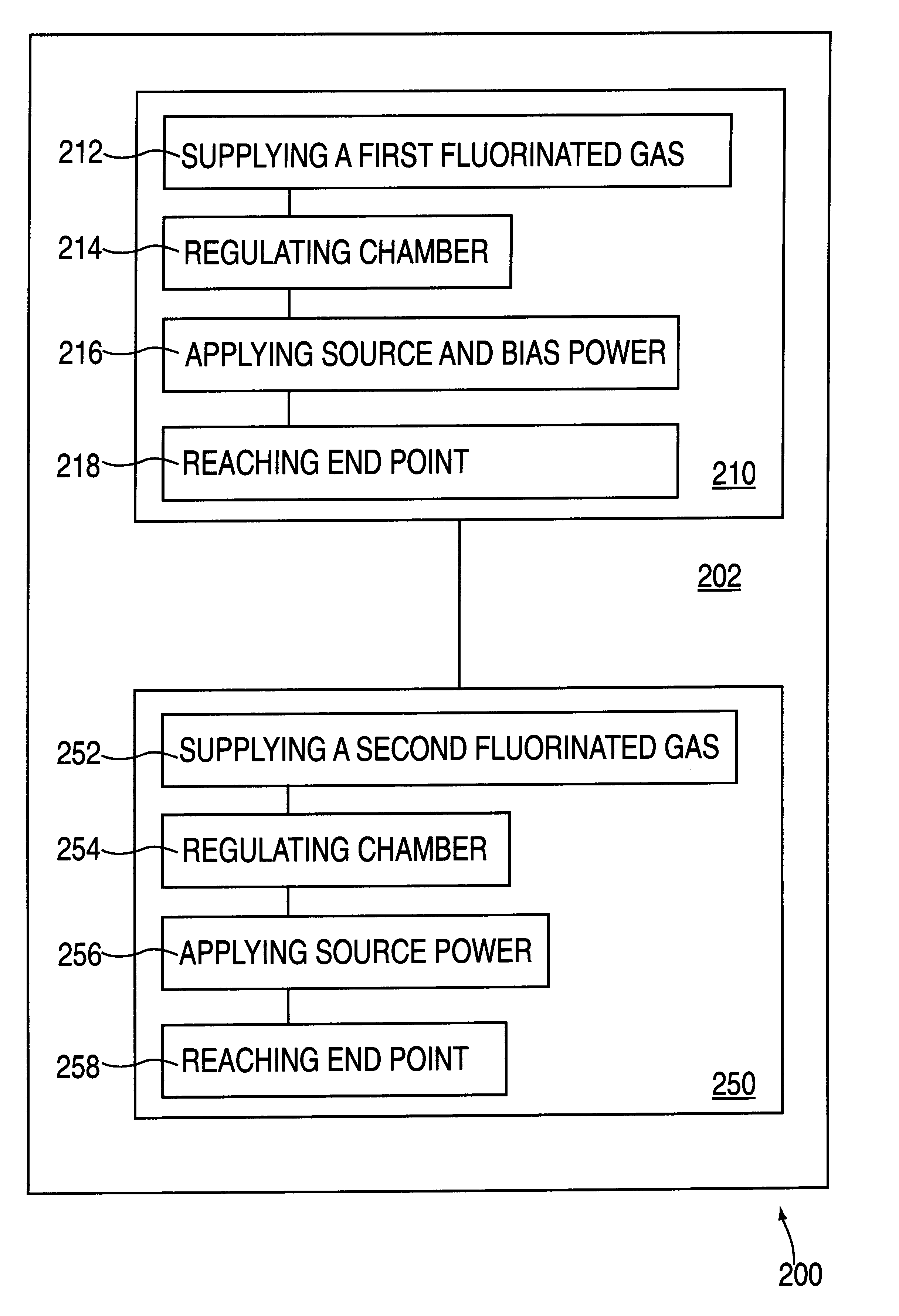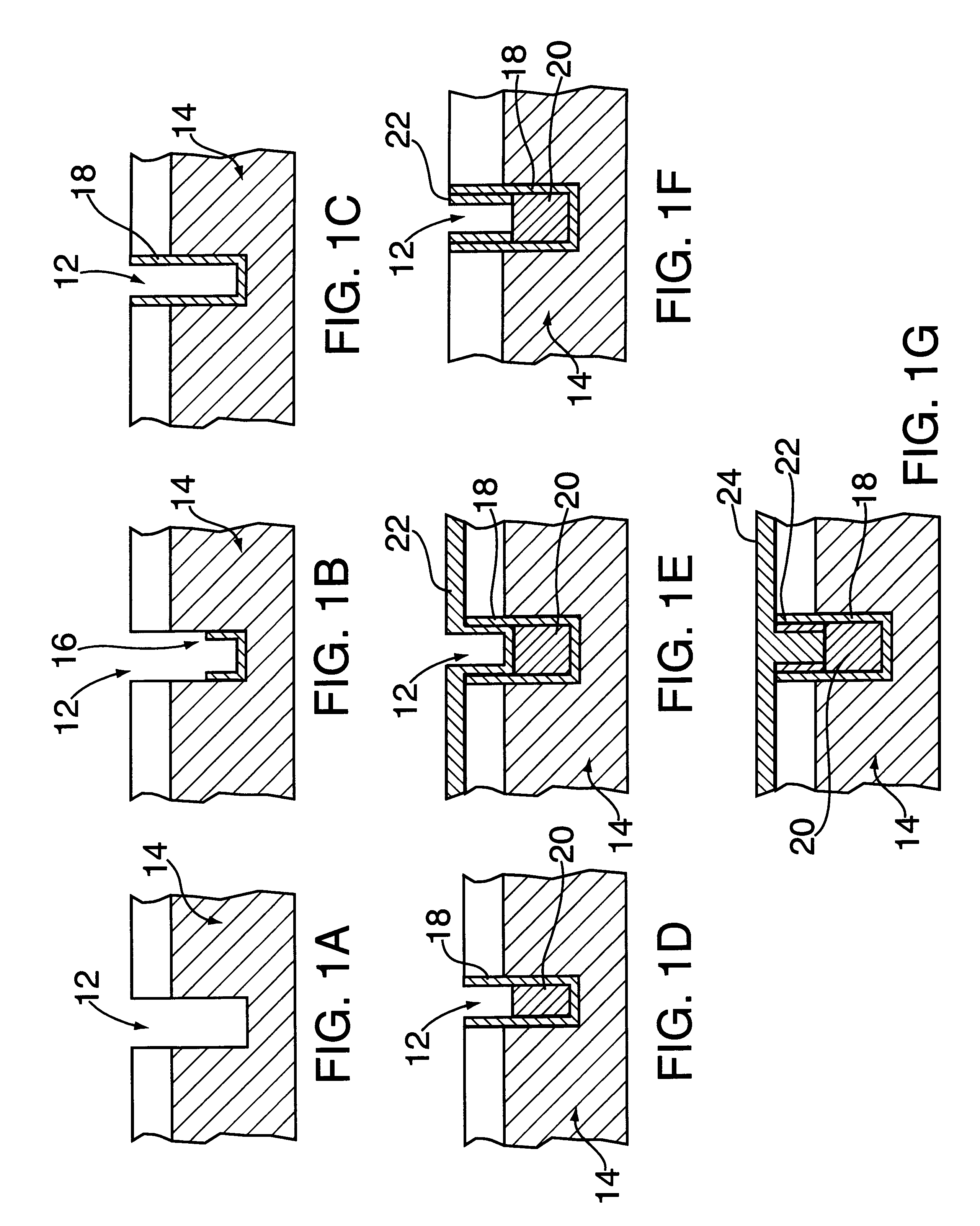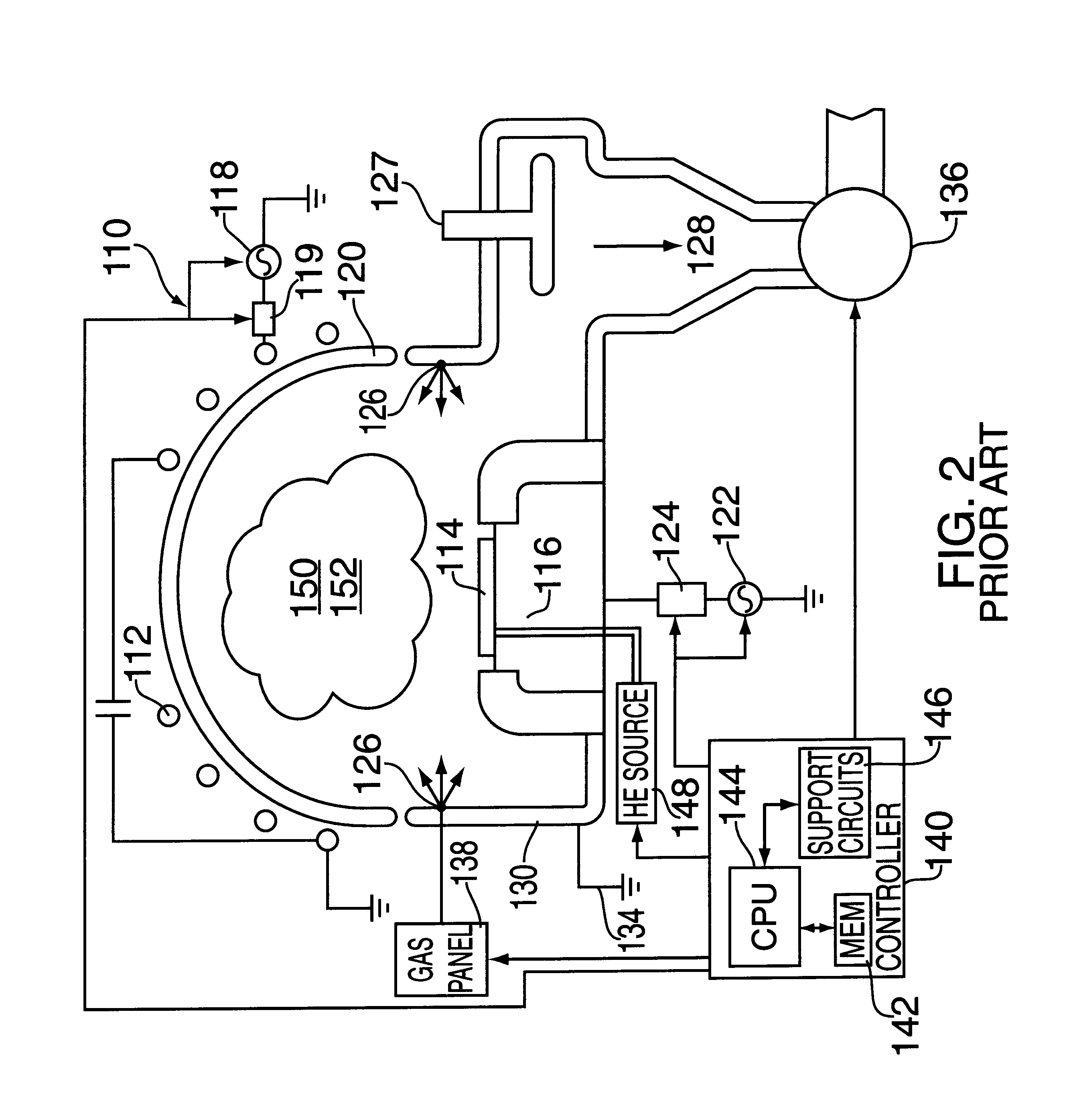Method and apparatus for sequentially etching a wafer using anisotropic and isotropic etching
a technology of anisotropic and isotropic etching and sequential etching, which is applied in the direction of electrical apparatus, decorative surface effects, decorative arts, etc., can solve the problems of large number of steps, large risk of device damage and contamination, and large number of process steps to achieve the desired structure in the film stack. achieve the effect of facilitating in situ etching
- Summary
- Abstract
- Description
- Claims
- Application Information
AI Technical Summary
Problems solved by technology
Method used
Image
Examples
Embodiment Construction
An embodiment of the present invention is a method of etching a substrate comprising a dielectric layer overlying a polysilicon layer. The embodiment of the present invention etches the dielectric to expose a polysilicon material that is subsequently etched. Both the dielectric and polysilicon etch occur sequentially within the same chamber of an etching system, i.e., in situ. The etch process of the present invention can be reduced to practice in a number of etching systems capable of etching both dielectric and polysilicon materials where the selectivity of the dielectric to the polysilicon can be varied. One such chamber is a Decoupled Plasma Source (DPS) Centura etch system available from Applied Materials, Inc., of Santa Clara, Calif.
FIG. 2 depicts a schematic diagram of the DPS etch process chamber 110, that comprises at least one inductive coil antenna segment 112, positioned exterior to a dielectric, dome-shaped ceiling 120 (referred hereinafter as the dome 120). The antenna...
PUM
| Property | Measurement | Unit |
|---|---|---|
| power | aaaaa | aaaaa |
| bias power | aaaaa | aaaaa |
| inductive source power | aaaaa | aaaaa |
Abstract
Description
Claims
Application Information
 Login to View More
Login to View More - R&D
- Intellectual Property
- Life Sciences
- Materials
- Tech Scout
- Unparalleled Data Quality
- Higher Quality Content
- 60% Fewer Hallucinations
Browse by: Latest US Patents, China's latest patents, Technical Efficacy Thesaurus, Application Domain, Technology Topic, Popular Technical Reports.
© 2025 PatSnap. All rights reserved.Legal|Privacy policy|Modern Slavery Act Transparency Statement|Sitemap|About US| Contact US: help@patsnap.com



